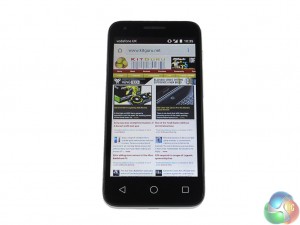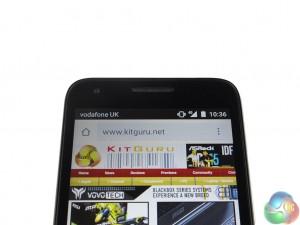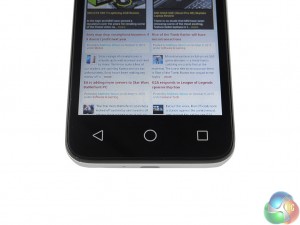
The more expensive ‘Smart' devices have all had good screens, particularly the Ultra 6 with its FHD panel. The Speed 6 is smaller with a 4.5-inch display, and a lower resolution of 480×854. This works out at 218 PPI, which is not especially sharp. It is usable, however, and consumers considering the Speed 6 will probably not be overly concerned by the lesser resolution.

The display does not use IPS technology either, meaning viewing angles are relatively weak. Moving from side to side does not affect the image, it is just when moving the phone vertically that problems start to arise. Still, in normal circumstances this did not prove problematic for me, as the display is still perfectly usable.

Display brightness is my biggest concern for the Speed 6's screen. It is fine for indoor usage, but outdoors it struggles even at full brightness. Admittedly, it is usable (with a fair amount of squinting) but it is still a challenge.
How bright a screen we should expect for £50 is a tough call – especially as some £500 flagships I have used are still not bright enough outdoors. My gut instinct is to say that Vodafone have prioritised other areas of the device (as you will see later on in the review) opting to save costs by adopting a lesser quality screen. Still, for £50 it is usable and I think that is probably the key consideration at this price.
 KitGuru KitGuru.net – Tech News | Hardware News | Hardware Reviews | IOS | Mobile | Gaming | Graphics Cards
KitGuru KitGuru.net – Tech News | Hardware News | Hardware Reviews | IOS | Mobile | Gaming | Graphics Cards


